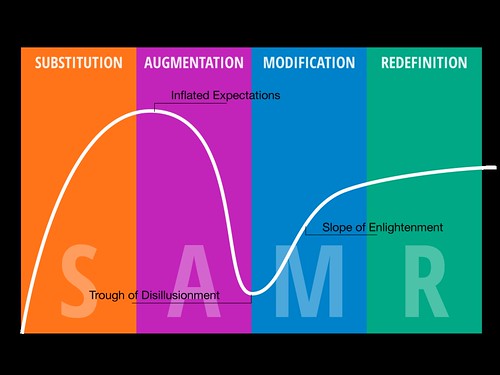 |
| Photo Op in a First Grade Classroom Linzi, Shandong, China |
There are many differences between US and Chinese schools. For example Chinese classrooms were much larger (over 40 students), and the stakes to students future are higher (high stakes in China is much higher stakes for students not teachers. What struck me though were the similarities. When we observed teaching, our Chinese partners and us were often in agreement about high quality instruction and what it should look like. In our last school after three days of work the principal asked to see me privately. She sat opposite me with her four assistant principals (one each for instruction, professional development, organization, and discipline) and with a tense expression asked for my opinion on the instruction we saw. I laid out a step by step analysis of the lessons (I used LessonNote to annotate lessons carefully). At the end of my exposition she was visibly more relaxed. Smiling she asked: "Do you think it is possible to integrate technology into our traditional lessons?" [translation].
Earlier in our visit I thought traditional meant a focus on memorization and recitation, but at this point it has become clear to me that she was referring simply to the existing curriculum. This is the same question/ concern I often encounter in schools. Teachers and administrators interpret our effort in professional development as an addition or even substitution of the existing curriculum, the reality is that we see it first and foremost as part of the curriculum already taught with some extra skills integrated when they are relevant (e.g. digital citizenship). I carefully responded that yes I thought there could be such integration that would benefit students and help instruction as well as 21st century skills. I went back to the SAMR model as a core foundation to move forward and for the first time since we entered the school we were on the same page.

At the heart of the matter was the fact that both sides did not understand how close our positions were. We were seeing the same instruction and evaluating it in similar way but all of us were also hung up on cultural differences not wanting to assume common ground that was actually there.



.jpg)

